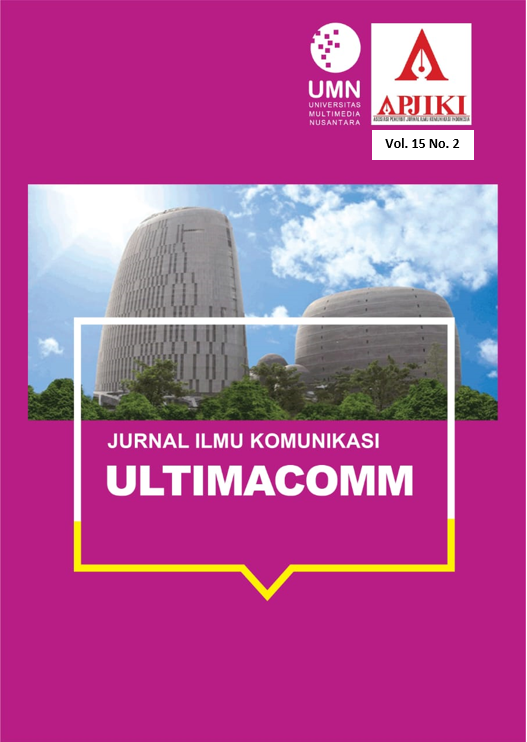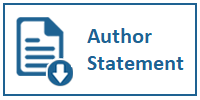Should We Learn from Srikandi Panghegar to Break The Discrimination and Stigma Against Transwomen?
DOI:
https://doi.org/10.31937/ultimacomm.v15i2.3659Keywords:
Heteronormativity, Construction, Identity, TranswomenAbstract
Heteonormativity is a view that makes transwomen a subject of discrimination and stigma. The discrimination and stigma received by transwomen in Cianjur Regency are inseparable from the construction of the Cianjur community, which is predominantly by Islamic values as the basis for society to normalize these actions. Cianjur is a city in West Java that has a strong history of Islamic movements in West Java. The life of the Cianjur people is influenced by Sundanese and Islamic cultures, which mingle in the joints of the community's social, cultural, and political life. Srikandi Panghegar exists as a community that fights against heteronormativity in Cianjur Regency. This study uses the theory of social movements from the perspective of LGBT, as proposed by Mary Bernstein (1997) with a qualitative research method using a case study approach, the results of this study explain the spread of identity as a method used in collective action as the goal of social movements in terms of gaining acceptance of stigmatized identities to change institutions. However, Srikandi Panghegar Cianjur has not yet reached the stage of changing institutions because movement mobilization is still focused on the community itself and movements only on a small scale at the district level. The spread of identity can then be examined in two forms: identity for critique (identity for criticism) and identity for education (identity for education).
Downloads
References
Amalia, S. (2019, April 4). Sejarah Gerakan dan Perjuangan Hak-Hak LGBT di Indonesia. Www.Magdalene.Co.
Barker, D. J. P. (2007). The origins of the developmental origins theory. Journal of Internal Medicine, 261(5), 412–417. https://doi.org/10.1111/j.1365-2796.2007.01809.x
BBC News. (2018, October 20). Edaran "bahaya LGBT” di Cianjur, Jawa Barat, memicu polemik. BBC News Indonesia.
Bernstein, M. (1997). Celebration and Suppression: The Strategic Uses of Identity by the Lesbian and Gay Movement. American Journal of Sociology, 103(3), 531–565. https://doi.org/10.1086/231250
Blackwood, E. (2005). Transnational Sexualities in One Place. Gender & Society, 19(2), 221–242. https://doi.org/10.1177/0891243204272862
Boellstorff, T. (2004). Playing Back the Nation: Waria, Indonesian Transvestites. Cultural Anthropology, 19(2), 159–195. https://doi.org/10.1525/can.2004.19.2.159
Braun, V., & Clarke, V. (2006). Using thematic analysis in psychology. Qualitative Research in Psychology, 3(2), 77–101. https://doi.org/10.1191/1478088706qp063oa
DE SOUSA, R. (2008). Really, what else is there? Emotions, value and morality. Critical Quarterly, 50(4), 12–23. https://doi.org/10.1111/j.1467-8705.2008.00852.x
Ependi, Y. H. (2017). Raden Aria Wiratanu I Islamisasi dan transformasi sosial di Cianjur abad XVII. Yayasan Omah Aksoro Indonesia .
Gelarina, D. (2017). Proses Pembentukan Identitas Sosial Waria di Pesantren Waria Al-Fatah Yogyakarta. Jurnal Kajian Islam Interdisiplin, 2(1), 31–59.
Hanif, E. A., Abdullah, M. N. A., & Komariah, S. (2022). Eksistensi Komunitas Srikandi Pasundan bagi Transpuan. Ideas: Jurnal Pendidikan, Sosial, Dan Budaya, 8(4), 1329. https://doi.org/10.32884/ideas.v8i4.991
Kartinaningdryani, I. (2019). Heteronormativitas, Wacana LGBT dan Perjuangan Komunitas Waria Melawan Stigma. Jurnal Pemikiran Sosiologi, 6(2), 191. https://doi.org/10.22146/jps.v6i2.51587
Kelly, M. (2016). Sex versus Gender Categorization. In The Wiley Blackwell Encyclopedia of Gender and Sexuality Studies (pp. 1–3). Wiley. https://doi.org/10.1002/9781118663219.wbegss028
Mohammad Maulana, & Nur Akifah Janur. (2020). TANGGUNG JAWAB NEGARA DALAM PEMENUHAN HAM DI BIDANG EKONOMI, SOCIAL, DAN BUDAYA. QISTHOSIA"¯: Jurnal Syariah Dan Hukum, 1(2), 107–129. https://doi.org/10.46870/jhki.v1i2.121
Neuman, W. L. (2013). Metodologi Penelitian Sosial: Pendekatan Kualitatif dan Kuantitatif. PT. Indeks.
Ningsih, E. S. W. (2014). Pengalaman Menjadi Pria Transgender (Waria): Sebuah Studi Fenomenologi. Jurnal Penelitian Psikologi, 3(2), 1–6.
Operario, D., Soma, T., & Underhill, K. (2008). Sex Work and HIV Status Among Transgender Women. JAIDS Journal of Acquired Immune Deficiency Syndromes, 48(1), 97–103. https://doi.org/10.1097/QAI.0b013e31816e3971
Peel, E., & Riggs, D. W. (2016). Lesbian, Gay, Bisexual, and Transgender Psychologies. In The Wiley Blackwell Encyclopedia of Gender and Sexuality Studies (pp. 1–6). Wiley. https://doi.org/10.1002/9781118663219.wbegss137
Rubin, G. (1993). Thinking Sex"¯: Notes for a Radical Theory of the Politics of Sexuality. In Culture, Society and Sexuality (First, p. 38).
Saputri, M. (2018, October 18). Pemkab Cianjur Keluarkan Surat Edaran Minta Khotbah Jumat soal LGBT. Tirto.Id.
Selamet, I. (2022, July 12). Membaca Makna Tiga Pilar Budaya di Cianjur: Ngaos, Mamaos, Maenpo . Detik Jabar.
Sujati, B. (2020). Tradisi Budaya Masyarakat Islam di Tatar Sunda (Jawa Barat). Ishlah: Jurnal Ilmu Ushuluddin, Adab Dan Dakwah, 1(1), 37–51. https://doi.org/10.32939/ishlah.v1i1.29
Washington, R. E., & Karen, D. (2001). Sport and Society. Annual Review of Sociology, 27(1), 187–212. https://doi.org/10.1146/annurev.soc.27.1.187
Yanggo, H. T. (2019). Penyimpangan Seksual (LGBT) Dalam Pandangan Hukum Islam. MISYKAT: Jurnal Ilmu-Ilmu Al-Quran, Hadist, Syari'ah Dan Tarbiyah, 3(2), 1. https://doi.org/10.33511/misykat.v3i2.59
Downloads
Published
How to Cite
Issue
Section
License
Ultimacomm Jurnal Ilmu Komunikasi allows readers to read, download, copy, distribute, print, search, or link to its articles' full texts and allows readers to use them for any other lawful purpose. The journal allows the author(s) to hold the copyright without restrictions. Finally, the journal allows the author(s) to retain publishing rights without restrictions
1. Authors are allowed to archive their submitted article in an open access repository
2. Authors are allowed to archive the final published article in an open access repository with an acknowledgment of its initial publication in this journal















